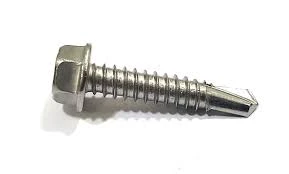stainless steel resin anchor bolts
Understanding Stainless Steel Resin Anchor Bolts A Comprehensive Guide
Stainless steel resin anchor bolts play a critical role in the construction and engineering industries, offering reliable solutions for securing structures. These innovative fasteners combine the strength of stainless steel with the bonding capabilities of resin, making them ideal for various applications, ranging from heavy-duty constructions to delicate installations. In this article, we will delve into the features, benefits, applications, and installation processes of stainless steel resin anchor bolts, providing a thorough understanding of their significance.
What Are Stainless Steel Resin Anchor Bolts?
Stainless steel resin anchor bolts are specialized fastening devices constructed from stainless steel, which is known for its excellent corrosion resistance, durability, and aesthetic appeal. These bolts are embedded in a resin-based adhesive, which hardens to create a solid bond with the surrounding material, typically concrete or masonry. The combination of stainless steel and resin creates a robust anchoring solution capable of supporting significant loads in diverse environments.
Key Features
1. Corrosion Resistance One of the primary advantages of stainless steel is its resistance to corrosion, making these anchor bolts suitable for outdoor applications or in environments exposed to moisture and chemicals. This property ensures a longer lifespan and reduces maintenance costs.
2. High Load-Bearing Capacity Stainless steel resin anchor bolts are engineered to withstand substantial loads, making them ideal for securing heavy equipment, structural components, and more. Their load-bearing capabilities make them a preferred choice in construction projects.
3. Versatility These anchor bolts can be used in various applications, from securing railings and fences to supporting heavy machinery in industrial settings. Their adaptability makes them an essential component in both residential and commercial constructions.
4. Easy Installation The installation process for stainless steel resin anchor bolts is relatively straightforward. Once the appropriate hole is drilled into the substrate, the resin is injected, and the bolt is inserted. The resin quickly sets, securing the bolt in place.
Benefits of Using Stainless Steel Resin Anchor Bolts
- Enhanced Durability Unlike traditional carbon steel fasteners, stainless steel anchor bolts do not rust, ensuring that the structural integrity of the installation remains intact over time.
- Cost-Effective Solutions Though stainless steel may have a higher initial cost compared to other materials, its durability translates to lower long-term expenses due to reduced maintenance and replacement needs.
- Environmental Considerations Many stainless steel products are recyclable, reducing the environmental impact associated with construction materials. Moreover, their long lifespan contributes to sustainable building practices.
- Aesthetic Appeal For applications where visibility is a concern, stainless steel provides a clean, polished appearance, enhancing the visual quality of the finished product.
Applications
stainless steel resin anchor bolts

Stainless steel resin anchor bolts are utilized in a wide range of applications, including
- Construction They are commonly used to anchor structural elements such as beams, columns, and walls in both residential and commercial buildings.
- Industrial Uses These fasteners are employed in factories to secure machinery and heavy equipment, ensuring stability and safety.
- Infrastructure Projects Bridge construction, roadways, and tunnels often rely on these anchor bolts for reliable performance under challenging conditions.
- Marine and Coastal Applications Their corrosion resistance makes them an excellent choice for marine environments where exposure to saltwater and harsh weather conditions is prevalent.
Installation Process
The installation of stainless steel resin anchor bolts involves several steps
1. Drilling A hole is drilled into the substrate to the required depth and diameter.
2. Cleaning The hole must be cleaned of dust and debris to ensure a strong bond.
3. Injecting Resin Resin is injected into the hole, filling it adequately to provide maximum adhesion.
4. Inserting the Bolt The stainless steel bolt is then inserted into the resin-filled hole.
5. Curing The resin is allowed to cure, at which point it hardens and secures the bolt in place.
6. Final Check Once cured, the integrity of the anchor can be tested by applying loads gradually to ensure its performance.
Conclusion
Stainless steel resin anchor bolts represent a significant advancement in fastening technology, offering unparalleled strength, durability, and resistance to corrosion. Their versatility in various applications makes them an invaluable choice for construction professionals. By understanding their features, benefits, and installation processes, stakeholders can make informed decisions to optimize their projects' success.
-
Weatherproof Plastic Expansion Anchors for OutdoorNewsJun.06,2025
-
Sustainability in the Supply Chain: Eco-Friendly TEK Screws ProductionNewsJun.06,2025
-
Load-Bearing Capacity of External Insulation FixingsNewsJun.06,2025
-
Double Head Bolts: Enhancing Efficiency in Industrial MachineryNewsJun.06,2025
-
Corrosion Resistance in Chipboard Screws: Coatings for Wholesale DurabilityNewsJun.06,2025
-
Butterfly Toggle Bolts : Enhancing Structural ResilienceNewsJun.06,2025
